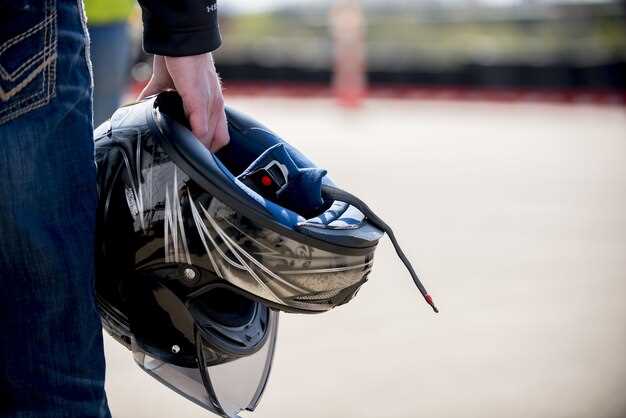
In the high-speed world of track racing, safety is paramount. One of the most crucial components of a racer’s safety gear is their helmet. Understanding the different certifications that helmets must meet can be the difference between life and death on the track. These certifications are designed to ensure that helmets provide adequate protection against the specific impacts and forces experienced during racing events.
Many racing organizations require that helmets meet certain certification standards, which are established by independent testing organizations. Among the most recognized certifications are those from the Snell Memorial Foundation and the FIA (Fédération Internationale de l’Automobile). Each certification entails rigorous testing procedures, assessing the helmet’s ability to absorb shock and protect the wearer’s head from penetrating impacts.
The significance of helmet certifications cannot be overstated. A certified helmet does not simply validate its compliance with safety standards; it signifies a commitment to protecting the racer during competitions. Understanding these certifications equips racers with the knowledge necessary to select the right helmet, ensuring they prioritize safety while pursuing their passion for speed.
Understanding Different Helmet Certification Standards

Helmet certification standards are essential in ensuring the safety and protection of track racing participants. Various organizations establish these standards, each with its own testing procedures and criteria that helmets must meet before receiving certification. Understanding these differences is crucial for racers when selecting the appropriate headgear.
One of the most recognized certification bodies is the Snell Memorial Foundation, which produces standards specifically for motorsports helmets. Snell certifications, such as the SA (Special Application) series, focus on providing impact resistance, fire resistance, and retention system performance, all tailored for high-speed racing environments.
The American standards set by the Department of Transportation (DOT) also play a significant role in helmet certification. Although primarily aimed at street use, DOT-certified helmets offer a minimum level of protection. However, racers should note that DOT standards do not address the same specific racing conditions as Snell certifications.
Another important certification is the ECE (Economic Commission for Europe) standard, widely recognized in Europe and used in many international racing events. ECE standards assess helmets for both impact performance and the effectiveness of the retention system, ensuring that helmets provide protection under various conditions.
Finally, the FIA (Fédération Internationale de l’Automobile) certification is vital for those competing in international competitions. FIA-approved helmets must meet stringent safety criteria, including specific testing for energy absorption and penetration resistance. This certification ensures that helmets are suitable for the extreme conditions experienced in elite motorsport events.
In summary, understanding these different certification standards is essential for track racers. Choosing a helmet with the appropriate certification offers assurance of safety and performance, ultimately contributing to the well-being of the athlete on the track.
How to Choose a Certified Helmet for Track Racing
Selecting the right helmet for track racing is crucial for ensuring your safety and meeting regulations. Here are some key factors to consider when choosing a certified helmet:
- Certification Standards: Ensure the helmet meets relevant safety certifications such as Snell, DOT, or ECE. These ratings indicate that the helmet has passed rigorous testing for impact resistance and safety.
- Fit and Comfort: A properly fitting helmet should be snug without being uncomfortably tight. Consider trying on different models and brands to find one that conforms well to your head shape. A comfortable helmet is essential for focus during racing.
- Construction Material: Look for helmets made from advanced materials such as carbon fiber or fiberglass that provide both strength and lightweight performance. The outer shell and inner liner should effectively absorb impact while ensuring ventilation.
- Visor and Shield: Check the visor quality and ensure it provides clear visibility while protecting against debris. Some helmets come with anti-fog coatings and tear-off options which can be beneficial during races.
- Internal Padding: Evaluate the quality of the internal padding, which should be removable and washable. Look for moisture-wicking materials that help keep you dry and comfortable during long races.
- Weight: Opt for a lightweight helmet as it can significantly reduce fatigue during extended periods of use. However, avoid sacrificing safety for weight; ensure it still adheres to safety certifications.
- Ventilation: Adequate airflow is vital to keep your head cool while racing. Check for strategic ventilation channels that promote airflow without compromising the helmet’s structural integrity.
- Budget: While it may be tempting to go for the cheapest option, investing in a higher-quality helmet can save lives. Establish a budget but prioritize safety and fit above all.
By considering these factors and choosing a certified helmet tailored for track racing, you can significantly enhance your safety on the track while maximizing performance. Always remember to replace your helmet periodically and after any significant impact to ensure ongoing protection.
The Importance of Regularly Inspecting Your Racing Helmet

Regular inspection of your racing helmet is crucial for ensuring maximum safety on the track. Over time, helmets can become worn, damaged, or degraded due to various factors such as impact, environmental conditions, and general wear and tear. A thorough examination can help identify any structural issues or signs of deterioration that may compromise the helmet’s effectiveness during a race.
During inspections, it’s essential to check the exterior for cracks, dents, or scratches that may compromise the helmet’s protective capabilities. The interior padding should also be examined for any compression or degradation, as this can significantly affect comfort and safety. Additionally, the visor and retention system must function properly to ensure a secure fit, preventing potential accidents caused by loose components.
Helmets typically have a limited lifespan, often ranging from five to seven years, depending on usage and manufacturer guidelines. Regularly inspecting your helmet allows you to stay informed about its condition and ensures that you replace it when necessary. Moreover, many racing organizations and events require helmets to meet specific safety standards, making it essential to maintain your gear in compliance with these regulations.
In summary, inspecting your racing helmet regularly is key to ensuring your protection on the track. This practice not only extends the life of your helmet but also provides peace of mind knowing that you have taken all necessary precautions for your safety while racing.
